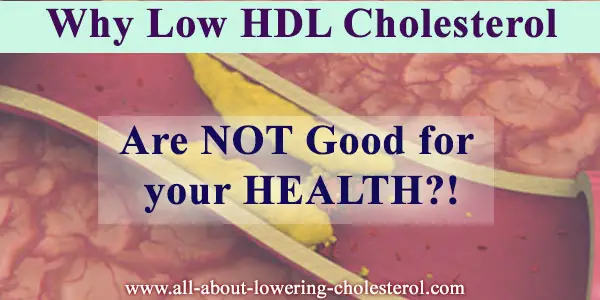
Low HDL cholesterol levels or the scientific term (but unpronounceable word) hypoalphalipoproteinemia (HA) is a condition in which concentrations of HDL cholesterol are reduced. Low HDL levels are thought to be one of the main causes of heart disease.
In this article, you will discover the major risk of Low HDL, the real causes of low HDL, the type of fats that causes such low levels, and finally how to increase low HDL levels naturally & safely.
In the end, I will show how I raised my HDL levels by 13%. But first, let’s find out what are the numbers that show low HDL levels.
You should have higher than 40 mg/dL levels of HDL in order to stay protected from heart problems. A better number would be above 60 as that is protective of the heart. And this is my level of HDL right now after increasing it by 13%.
The Grave Risk of Having Low HDL Cholesterol
Low levels of HDL cholesterol predispose to the development of atherosclerosis since HDL cannot clean LDL/Bad cholesterol and send it back to the liver for further processing and elimination.
The bad LDL then builds up in arteries and leads to atherosclerosis – a condition in which the blood arteries become hard and thick due to the accumulation of LDL or “bad” cholesterol over years.
Lower-than-normal HDL levels are directly related to a higher incidence of heart disease as the risk of heart attack increases by 2% for every 1% decrease in HDL cholesterol.
Interestingly, about 58% of heart disease patients have HDL cholesterol below the 10th percentile of normal values of HDL cholesterol levels.
Low HDL Cholesterol levels are frequently found in patients with coronary heart disease (CHD). Research indicates that 58% of patients with CHD have high-density lipoprotein (HDL) cholesterol levels below the 10th percentile of normal values.
What are the Causes of Low Levels of HDL Cholesterol?
Causes known for low HDL cholesterol levels vary. The primary cause may be inherited (also called familial HDL deficiency).
Obesity, passive lifestyle, smoking, type-2 diabetes, chronic kidney disease, very low-fat diet, severe liver disease, high triglyceride levels, use of certain medications like anabolic steroids, poor absorption of nutrients, and malnutrition are the common secondary causes of low levels of HDL.
Low Levels of HDL Cholesterol Resulting from Fats
Good diet control is a cornerstone of any effort to counter low HDL cholesterol levels. Regular consumption of a diet rich in saturated fats not only raises your LDL or “bad” cholesterol but also blocks the protective effects of your HDL cholesterol.
Saturated fats are detrimental to your overall health and cholesterol and should be avoided to keep healthy cholesterol levels. These fats are found mainly in meats and dairies.
Monosaturated fats however help to increase HDL levels. They are present in plant oils like olive, canola, and peanut oils. These fats protect your HDL levels and help you in maintaining healthy cholesterol and should be preferred over saturated and trans fats.
2 Ways to Raise HDL Levels Naturally
First, to raise HDL levels you can eat foods that help increase HDL cholesterol like Olive oil, berries, and cocoa.
Secondly, you can use proven supplements that increase HDL cholesterol like niacin and red yeast rice. Or you can take a proprietary supplement called Choleslo, which contains not only niacin and red yeast rice but also policosanol, guggul, and garlic all of these are well known for their positive cholesterol effects. This supplement increased my HDL cholesterol by 13% and lowered my total cholesterol by 23% and LDL/bad cholesterol by 32%.
You can find out more about Lipi-Rite here.
All the Best
Artin Vaqari
Founder
all-about-lowering-cholesterol.com
Leave this article about Low HDL Cholesterol and find out more about HDL & LDL Cholesterol.
